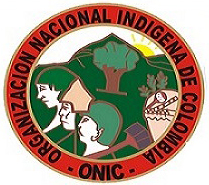Peru
Peru: four dead in clash over Chinese mine project
At least four are dead and several more injured following clashes between police and residents at Challhuahuacho in Peru's Apurímac region, amid protests over Las Bambas copper mine project, now nearing completion. Several hundred residents attacked the installation, and police responded with tear-gas. Authorities have mobilized army troops to the area and imposed a 30-day state of emergency. Residents in the local province of Cotabambas and neighboring Grau launched an ongoing civil strike last week to demand that the owner of project, Hong Kong-based MinMetals Resources (MMG Ltd), make changes to its environmental management plan. Protesters oppose the company's plan to process concentrates of copper and molybdenum in the town, threatening local waters. They also object to plans for processed ore to be shipped to the Pacific coast by train and truck rather than pipeline, posing greater risk of spill. The plan was recently revised by the company to allow these practices, sparking the protests. The mine is scheduled to begin production in 2016 and is exepected to produce 400,000 metric tons of copper the following year. (Channel News Asia, NYT, BNAmerica, Sept. 29; AP, Sept. 28; Diario Correo, Sept. 27)
Peru: new violence over La Oroya metal complex
Residents in of Simón Bolívar, in Peru's Pasco region, clashed with National Police in a highway confrontation Sept. 23, as they were returning from a cross-country march to La Oroya metal-smelting complex in neighboring Junín region. One protester was injured with a blow to the head in the fracas, which apparently began when an officer made a death threat to the passing demonstrators. The marchers intend to continue to Lima, and an officer reportedly told them that if they attempted to advance towards the capital they would "die like dogs." The protesters are demanding health and environmental remediation measures to address contamination of the area's waters with heavy metals from the Oroya complex. (RPP)
Peru: protests as US military forces arrive
Without fanfare in either country, some 3,000 US troops are now arriving in Peru for an anti-drug "training mission." The troops embarked, along with several cargo planes, on the USS George Washington Sept. 1—sparking street protests in Lima. Thousands filled downtown Lima chanting slogans against the "Yankee terrorists," and several US flags were burned. Ex-congressman Gustavo Espinoza decried what he called a "military invasion." He suggested that the US had ulterior motives behind the mobilization: "What is looming is a sort of 'sting operation'...designed to enhance the North American presence not only in Peru but in the Americas... The Empire seeks to change the correlation of forces now in place in the region." (HispanTV, Sept. 2; TeleSUR, Sept. 1)
Peru: indigenous protesters occupy oil installation
In new protests over the Bloc 192 oil-field in the north Peruvian Amazon, some 20 indigenous Achuar and Kichwa warriors occupied the local air-strip of multinational Pluspetrol, in Trompeteros, Loreto region. They also seized a pumping station at nearby Pavayacu. The protesters are demanding better compensation for the use of their lands, and opposing the new contract for development of the field to Canadian company Pacific Stratus Energy, a subsidiary of Pacific Rubiales. A civil strike was also declared in Iquitos, the region's principal city, where barricades were built on major streets, paralyzing traffic. The Iquitos protesters, supported by the region's president, want the oil bloc to be taken over by state-owned PetroPeru. "The only thing foreign companies have done is pollute and foment distrust among local populations," said Loreto president Fernando Meléndez. "We don't see any benefits and remain an impoverished region." The bloc has been exploited for more than 40 years, most recently by Pluspetrol, an Argentine company whose contract expired Aug. 29. The 48-hour paro or civl strike was jointly called by Loreto Patriotic Front (FPL) and the Federation of Native Communities of Alto Tigre (FECONAT). (TerraPeru, Sept. 3, La República, Reuters, Sept. 2; El Comercio, Peru21, Sept. 1; Andina, Aug. 21)
Peru: La Oroya protests turn deadly
Workers at La Oroya on Aug. 13 lifted an "indefinite strike" declared two days earlier, and relaxed their blockades of the highway through central Peru's Junín region. The first day of the strike saw one worker killed by a bullet to the chest and some 60 others injured in clashes with the National Police. The decision to "suspend" the strike was taken after union representatives met in Lima with officials from the Environment and Labor ministries, and National Office of Dialogue and Sustainability (ONDS), a new body established to address social conflicts. Officials promised union leaders to try find a way to keep the troubled Oroya Metallurgical Complex open. But deadlines are looming: the workers say they will resume their strike if a solution is not found within eight days. Meanwhile, creditors of complex owner Doe Run say if there are no bidders for the smelters and associated Cobriza mine by Aug. 27, the company will go into liquidation. Peru's government rejected worker demands to ease the legal limit on sulfur dioxide emissions for the complex to allow it to re-open.
Peru: mine opponents disrupt Arequipa festivities
Opponents of the disputed Tia Maria mega-mine project organized a dissident contingent at the "Friendship Parade" through the capital of Peru's southern Arequipa region, during festivities marking the 475th anniversary of the city's founding. Farmers from the Tambo Valley, barred by organizers from having a politically themed float in the Aug. 15 parade, marched alongside it, chanting "¡Agro sí, mina no!" (farming yes, mine no!). (Correo, Andina, Aug. 15; Peru this Week, Aug. 12) Protests over the project have resumed since a 60-day state of emergency instated for Islay province in May ran out. Mine opponents are meeting to discuss a region-wide general strike against the project. (Peru This Week, Aug. 10)
Peru: naked protesters storm congress
National Police troops used tear-gas and armored vehicles against marchers for abortion rights in Lima Aug. 13, who attempted to storm Peru's Congress building. Many of the hundreds of women at the protest were partially naked, with demands for reproductive freedom written on their torsos in red—symbolizing blood. Protesters were pressing for passage of a bill to remove penalties for abortion in the case of rape. A simialr measure was introduced to Congress last year, but failed to pass.
Peru: army claims rescue of Sendero slaves
Peru's army on July 30 announced that it had rescued 39 people—the majority indigenous Asháninka and 26 of them underage—who were being held captive in Sendero Luminoso camps in the Apurímac-Ene River Valley (VRAE). Some had apparently been held for up to 30 years. The children, aged 4 to 13, were reportedly malnourished and suffered from skin diseases. Reports said soliders were led to the camps by two youths who had been born in capitivity and deserted. But reports also said that some of those "rescued" were reluctant to leave, and even "resisted." No shots were fired in the raids, which were carried out along the Rio Tambo in Sector Five of Pangoa district, Satipo province, Junín region. One of the "rescued" women was pregnant, and may have been held in sexual slavery. The children and adults alike worked cultivating coca leaf. Anti-terrorism police commander Gen. Jose Baella said that some of the adults were abducted between 20 and 30 years ago from Puerto Ocopa and nearby towns in Junín, back when the rebel movement was still strong. Deputy defense minister Iván Vega said Sendero is believed to hold at least 200 more captive in the VRAE. (El Correo, Aug. 6; AP, AFP, Aug. 1; La Rioja, July 30; El Comercio, July 28)















Recent Updates
20 hours 52 min ago
1 day 1 hour ago
1 day 16 hours ago
1 day 17 hours ago
2 days 35 min ago
2 days 2 hours ago
2 days 17 hours ago
3 days 1 hour ago
4 days 19 hours ago
4 days 19 hours ago